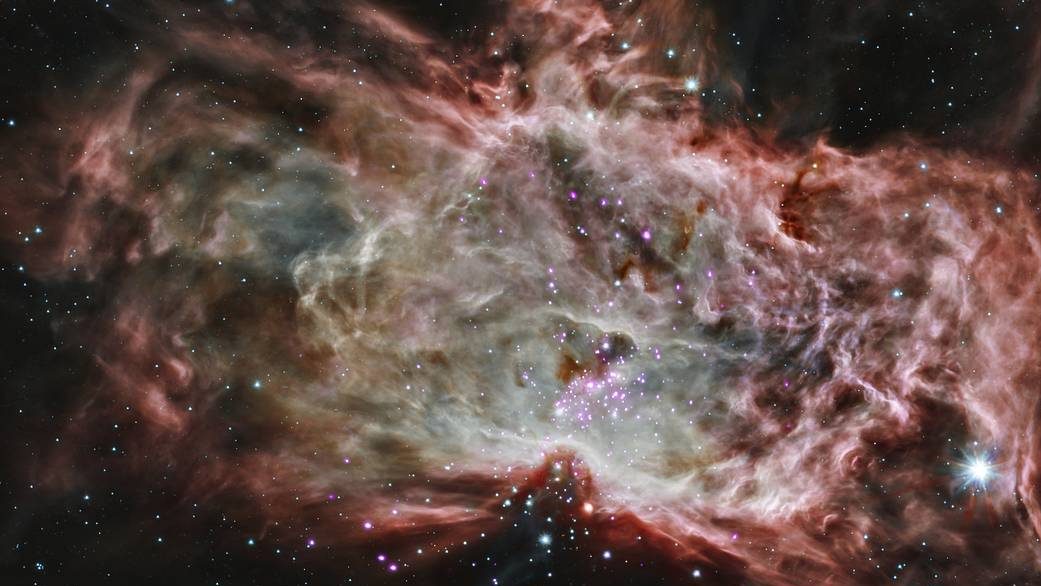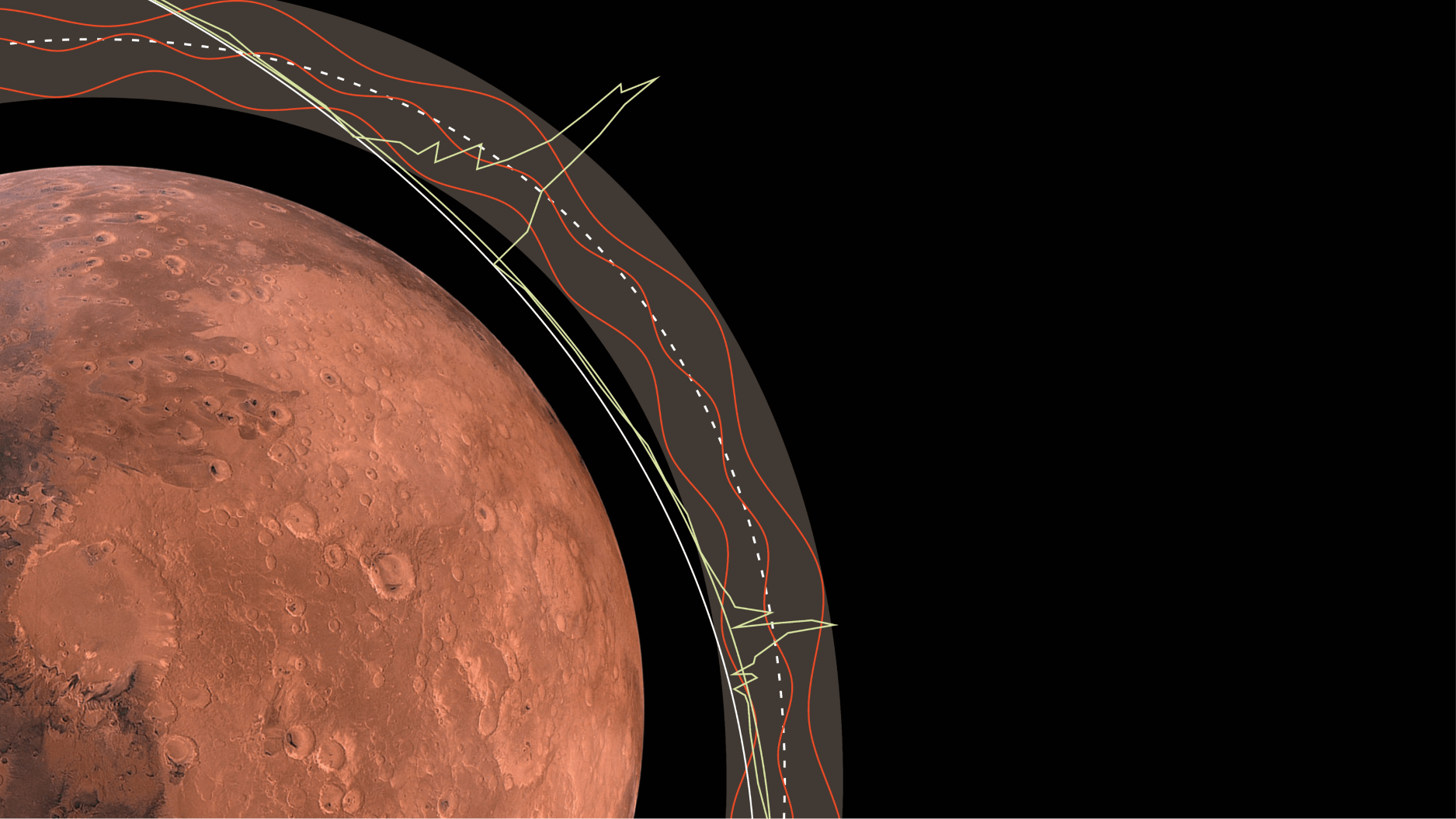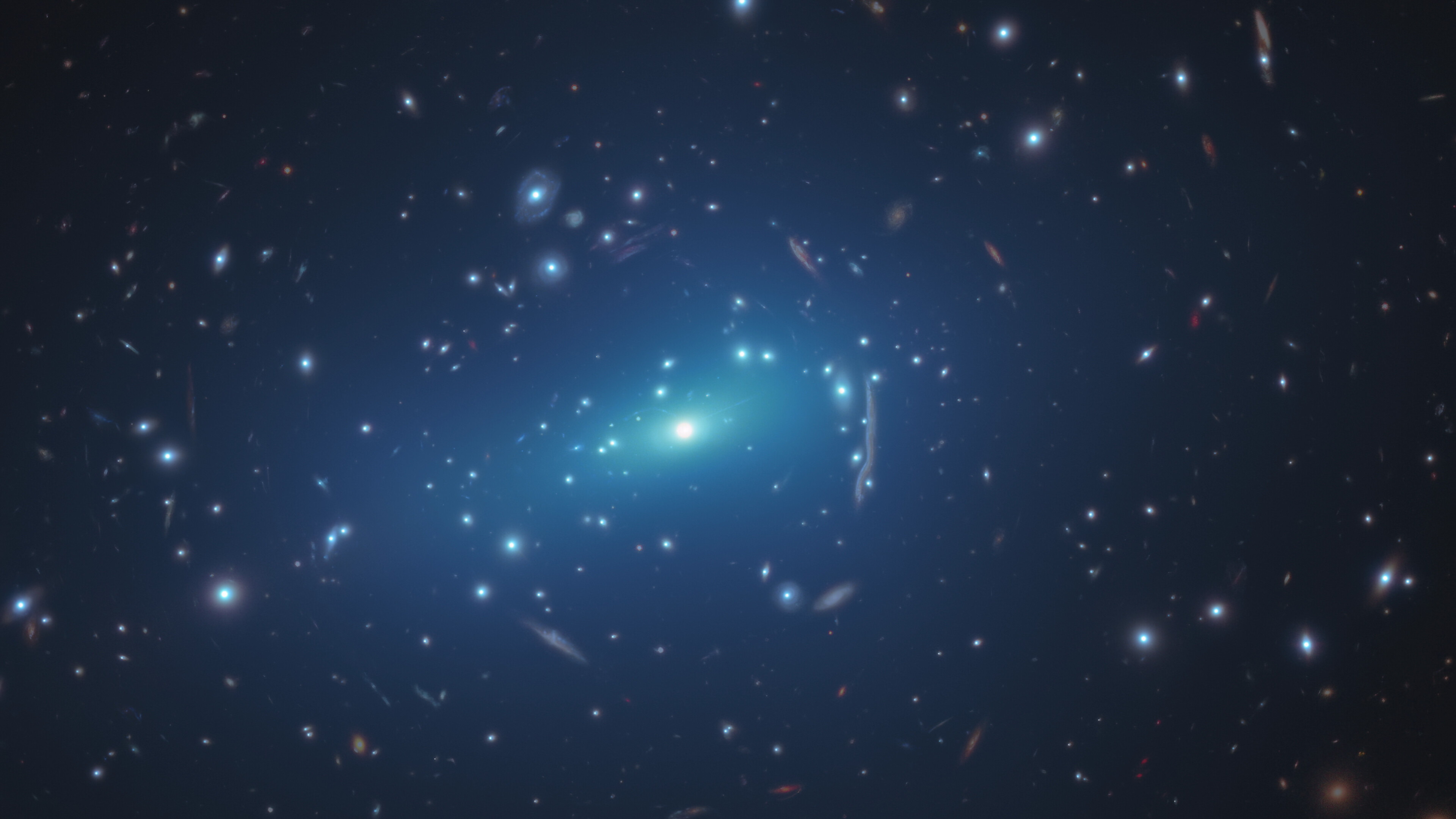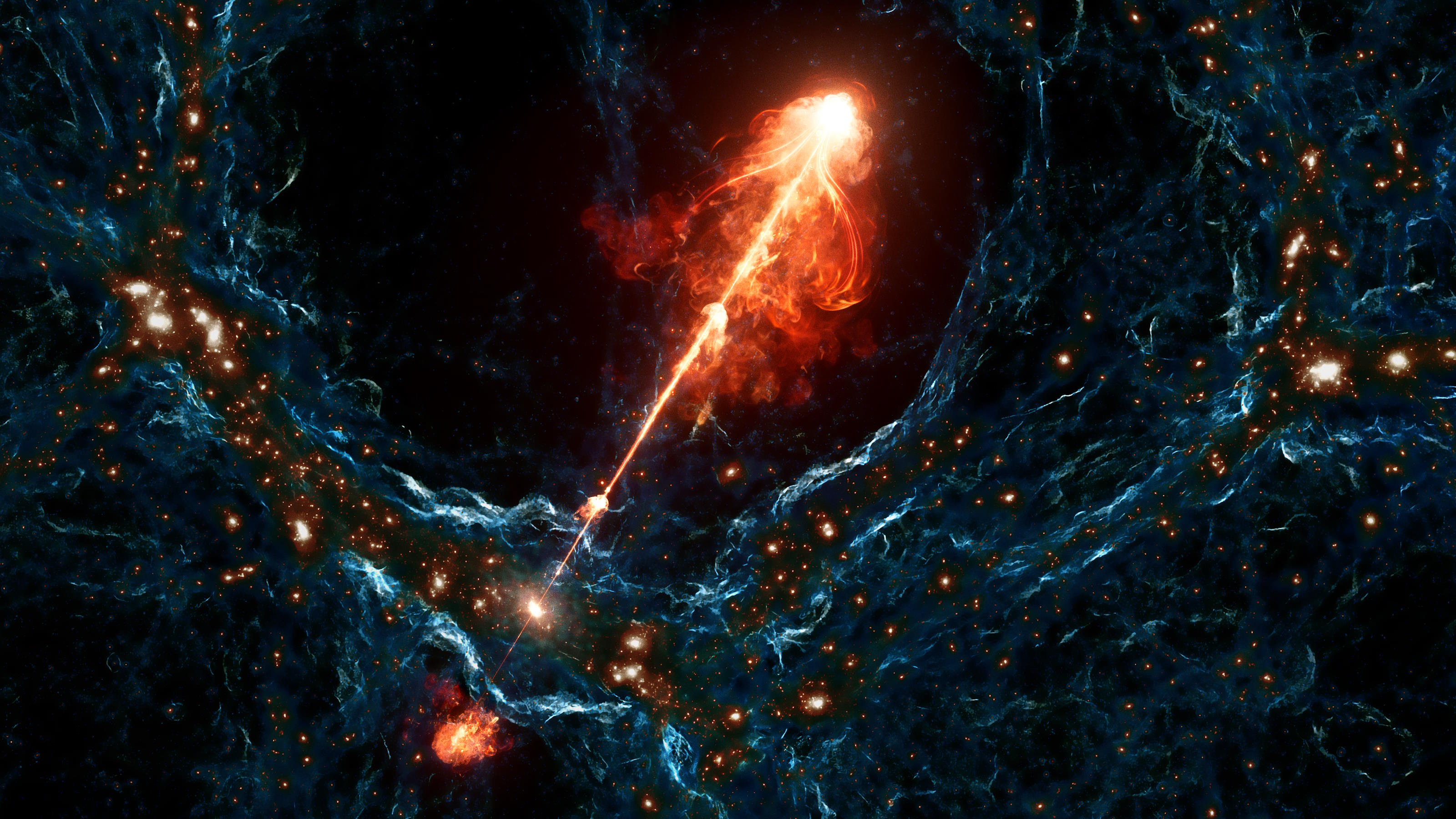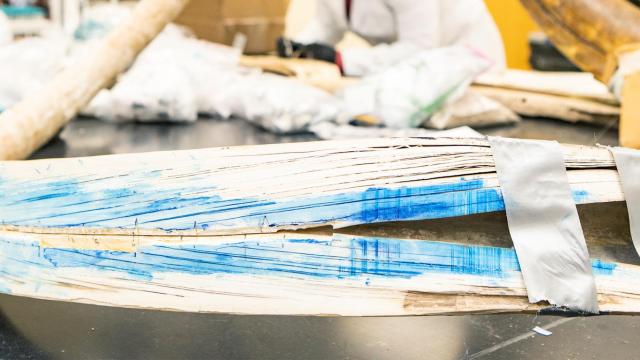Quasars: how to feed a supermassive black hole
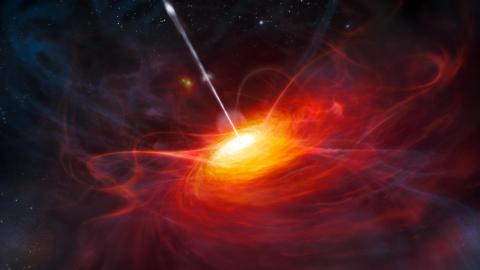
By ESO/M. Kornmesser - http://www.eso.org/public/images/eso1122a/, CC BY 4.0, https://commons.wikimedia.org/w/index.php?curid=15700804
- A new simulation combines models at the local and galactic scale to show how supermassive black holes grow and evolve with their galaxies.
- Gas that would escape at the edge of galaxies is held in by gravity and often makes its way to the center.
- The simulation requires the combined power of hundreds of CPUs.
Supermassive black holes are found at the center of most large galaxies, and they can be millions to billions of times more massive than the Sun. They often reveal their existence by tossing supergiant stars about like rag dolls. When they are particularly energetic, these black holes can turn the nucleus of the galaxies they inhabit into bright-shining quasars, which release so much electromagnetic energy that they outshine the entire Milky Way.
However, supermassive black holes remain mysterious. How they form in the first place remains unknown, and how quasars get enough material, mostly gas, to fuel their incredible luminosity has troubled scientists for years.
Now, a new model that attempts to explain these mysteries was recently published inThe Astrophysical Journal. A thousand times more detailed than previous models, this one allows researchers to look both at what is happening near the black hole and at the scale of entire galaxies.
Modeling the universe’s biggest monsters
A video clip showing the model in action at different scales allowing the viewer to see how gas makes its way towards the accretion disk surrounding the black hole.
Older models that tried to show how supermassive black holes interacted with their galaxies ran into a couple of problems.
Large-scale simulations are very good at handling what is going on across an entire galaxy, but they become problematic at smaller scales. When one tries to look too closely at a black hole using such models, uncertainty abounds. On the other hand, “zoom-in” simulation models can provide a great idea of what is going on next to a black hole, but they fail to describe what is going on in the rest of the galaxy.
Combining the benefits of the two into a single model is vital, as the interplay between the processes at the larger and smaller scales is key to understanding the co-evolution of supermassive black holes at the center of galaxies and that of the galaxies themselves. The new model aims to bridge the gap between these older models by starting from the Feedback in Realistic Environments (FIRE) project and adding in details from the large-scale simulations to produce a model that can zoom in as far as a tenth of a parsec (~0.3 light-years) as well as model other occurrences at a galactic scale.
They achieved this by combining the interstellar medium physics from the FIRE project, a new approach to black hole growth that reduces the uncertainties when looking at smaller scales, and, as it was phrased in the study, “a novel hyper-Lagrangian refinement technique that increases the resolution dynamically closer to the black hole.”
The new model also includes a multitude of other important elements, such as the effects of gravity, feedback from large stars, gas hydrodynamics, and the expansion of the universe to give as comprehensive a look at galaxies as possible.
No escape
The model allows researchers to see and follow gas as it moves across a galaxy at much higher resolutions than was possible before. Running on the combined power of hundreds ofCPUs, the model provides first-ever insights into the flow of gases from the edges of a galaxy into the maw of an all-consuming supermassive black hole.
As it turns out, gas that would otherwise escape from a galaxy into the void between galaxies is shown to be affected by the gravity of things like the spiral arms of the galaxy and drawn back into it. Importantly, this helps explain where all the gas needed to fuel quasars is coming from. Without these “gravitational brakes,” the gas would escape and orbit the galaxy forever, where quasars cannot use it for fuel.
Co-authorClaude-André Faucher-Giguèr of Northwestern University further explained the value of these findings in terms of understanding how the most incredible objects in the universe operate in an interview with Northwestern Now:
“The very existence of supermassive black holes is quite amazing, yet there is no consensus on how they formed. The reason supermassive black holes are so difficult to explain is that forming them requires cramming a huge amount of matter into a tiny space. How does the universe manage to do that? Until now, theorists developed explanations relying on patching together different ideas for how matter in galaxies gets crammed into the innermost one millionth of a galaxy’s size.”
The authors hope to continue their research by observing a large number of galaxies and their central supermassive black holes to get a better idea of how such monsters develop and evolve over time.

